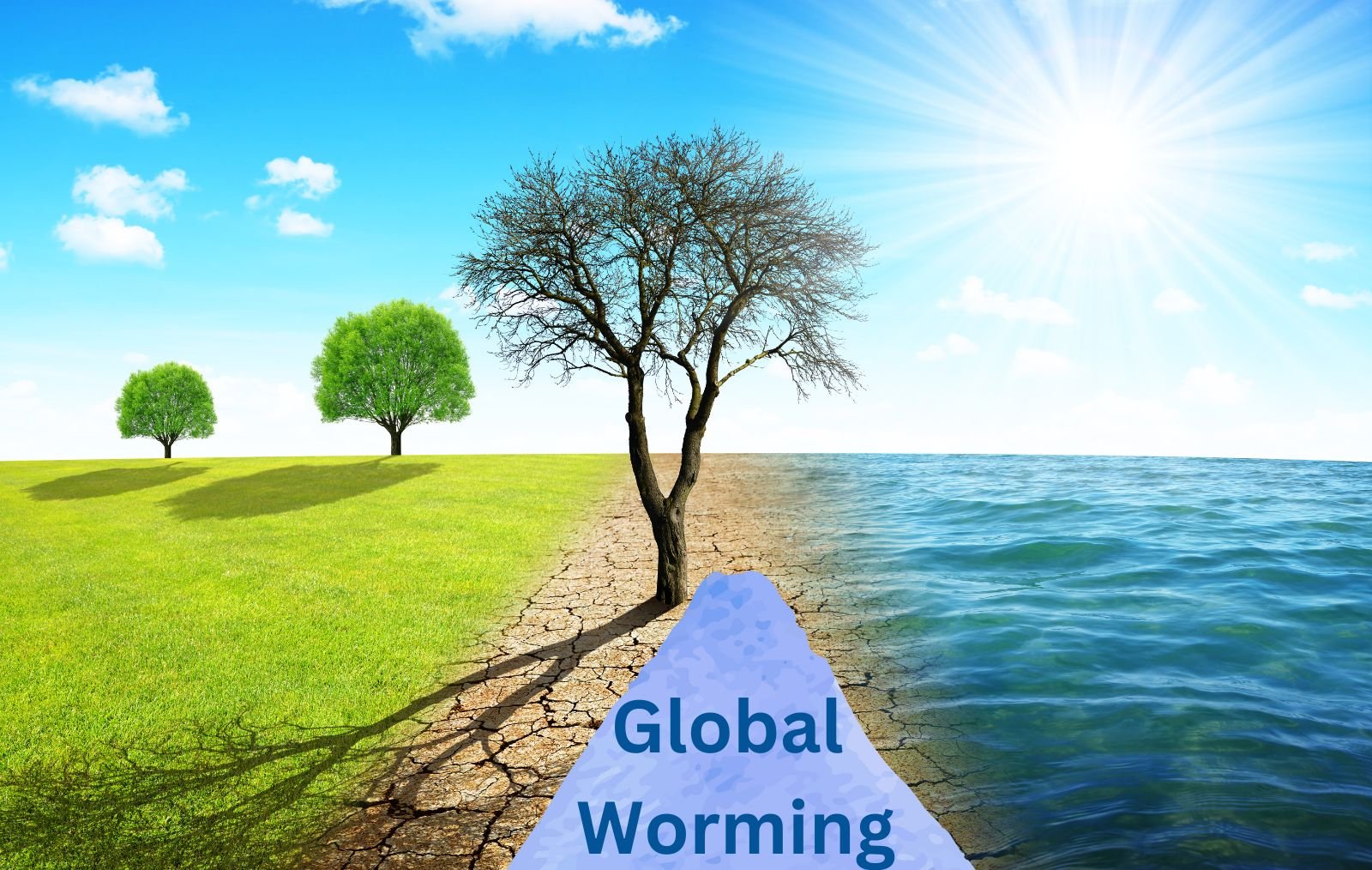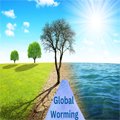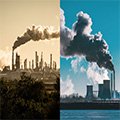
The Effect of Global Warming: Causes, Effects, and Solutions
One of the burning issues of our times is global warming. It refers to the gradual warming of the Earth by about one degree Celsius primarily due to man. It has effects that start appearing worldwide: rising natural disasters, rising sea levels, or disruption of the ecosystems.
This blog briefly outlines what effect global warming is having, examines causes and effects, and discusses possible solutions so that this emerging crisis can be controlled.
What is Global Warming?
It is simply the increase in the average surface temperature of Earth due to increased levels of greenhouse gases in the atmosphere. The major contributors of these gases include carbon dioxide (CO₂), methane (CH₄), and nitrous oxide (N₂O). Greenhouse effect is an effect that captures solar heat from the sun and traps it, thus causing warming in the planet.
Since the industrial revolution, human activities such as burning of fossil fuel, deforestation, and industrialization have increased the concentration of greenhouse gases, hastening the warming process.
Causes of Global Warming
To deal with this problem effectively, one needs to understand the causes of global warming. The major contributors are as follows:
1. Burning of Fossil Fuels
Burning of fossil fuel in electricity generation and in transportation of individuals as well as for industries liberates heavy volumes of CO₂ besides other greenhouse gases in the atmosphere. It also contributes to global warming significantly.
2. Deforestation
Forests are massive carbon sinks. When those trees are cut down for agricultural use, logging, or urban expansion, the carbon they stored will end up in the air. Deforestation reduces Earth's carbon sinks, and thereby enhances the greenhouse effect.
3. Agriculture
Agriculture is a significant source of methane due to the farming of livestock. Rice paddies, fertilizers, and other land-use practices also emit nitrous oxides.
4. Industrial Emissions
Chemical activities, cement production, waste disposal, and management give rise to emissions of green house gases. This issue has worsened by sustained high rates of consumer product demand and accelerated urbanization and energy use.
4. Transportation Emissions
Emission from automobile fuels by cars, trucks, airplanes, and ships by the consumption of gasoline and diesel form another major contributing cause to the global warming.
Impact of global Worming
1. Climate Change and Weather Patterns
Global warming leads to extreme weather patterns as manifestations of climate change. Some of these are extreme heat waves, droughts, hurricanes, and heavy rainfall. Such disturbed weather conditions put ecosystems, agriculture, and infrastructure at risk.
2. Rising Sea Levels
Melting of polar ice caps and glaciers due to rising temperatures raise sea levels. Through flooding and erosion, this would pose a threat to coastal regions and low-lying islands, compelling millions to leave their homes and disturbing marine ecosystems.
3. Loss of Biodiversity
The climatic warming forces many species to shift, migrate, or become extinct. The coral reefs, carrying varied marine life are bleaching owing to ocean temperature rise. Terrestrial species have their habitats destroyed in the processes of cutting down forests and climate change.
4. Impact on Agriculture and Food Security
It changes the growing seasons, reduces water availability, and increases the frequency of pests and diseases, thus risking the global food security, especially in developing countries.
5. Public Health Issues
Global warming is associated with health risks through infectious diseases, heat-related illnesses, and air pollution. Rising temperatures enable diseases like malaria and dengue to spread to new regions.
Social and Cultural Impacts
Global warming effects are not limited to the environment; they affect the economy, livelihoods, and communities. Some of the major social impacts include:
1. Economic Losses
Natural disasters like hurricanes, wildfires, and floods caused by global warming involve huge economic losses. Destroyed infrastructure, crop destruction, and raised insurance premiums place a heavy economic burden on both the government and the people.
2. Climate Refugees
Rising sea levels and freak weather will force people out of their houses. Climate-induced migration threatens to overwhelm countries' systems for managing displaced populations.
5. Freshwater Shortage
The melting ice caps, changed rainfall behavior, and prolonged drought seasons will further deplete available water. Africa and parts of Asia already face regions of fresh water scarcity-which could lead to scarcity of resources.
Global Warming Solutions: What to Do?
Cooperation between people, governments, and industries is needed in order to tackle global warming. Here are some of the key solutions to mitigate the damage brought about by global warming:
1. Switch over to Renewable Energy
Dependency on fossil fuels and its substitution with renewable resources like solar, wind, and hydropower decreases gases in the atmosphere. Governments and organizations need to invest in clean energy technologies to make transition faster.
2.Conservation and Efficiency in Energy Generation
Improved efficiency in energy use in buildings, transport, and industries reduce the emission of carbon into the atmosphere. Simple things such as the use of energy-saving appliances, carpooling, and minimizing energy consumption in the home also have a positive impact.
3.Afforestation and Reforestation
Planting trees and regrowing degraded forests help remove carbon dioxide from the atmosphere while also combating deforestation. The government can encourage afforestation programs to reverse damage done to the environment.
4. Sustainable Agriculture
The application of sustainable agricultural practices, including precision farming, agroforestry, and organic farming, reduces the emissions of the agriculture sector. In addition, decreased food waste further reduces its environment impact.
5. International Policy and Agreements
Limit the increase in temperature globally by international cooperation through agreements like the Paris Agreement. Governments need to formulate ambitious goals and work collectively on policies to halt emissions and invest in climate resilience.
6. Public Awareness and Education
People's consciousness with regards to the impact of global warming and a sustainable life have to be raised so change can be brought forth. Individuals can do something as well, such as an eco-friendly lifestyle or through climate policies, reduced carbon footprint.
Conclusion
This issue is not just of an environmental concern but really one that threatens all strata of life. From biodiversity loss to rising sea levels and food insecurity, global warming imperils ecosystems, economies, and human well-being. It is not too late to act-gain an understanding of the causes of global warming and take bold strides toward reducing emissions while transitioning to renewable energy sources and promoting sustainable practices that can mitigate even the worst impacts and protect the planet for generations to come.
FAQs on Global Warming
What is the major cause of global warming?
The main cause of global warming is through fossil fuel usage, emitting carbon dioxide and other greenhouse gases into the atmosphere.
What do individuals do to mitigate global warming?
Individuals can minimize global warming by conserving energy, using public transports, recycling, planting trees, and promoting policies that encourage usage of renewable energies.
Can you differentiate between global warming and climate change?
Global warming is an increase in the average temperature of Earth, while climate change refers to more general changes in weather patterns and ecosystems resulting from global warming.
Can global warming be reversed?
Although global warming cannot be reversed fully, reducing emissions and practicing sustainable activities can slow down the process and reduce its effects.











